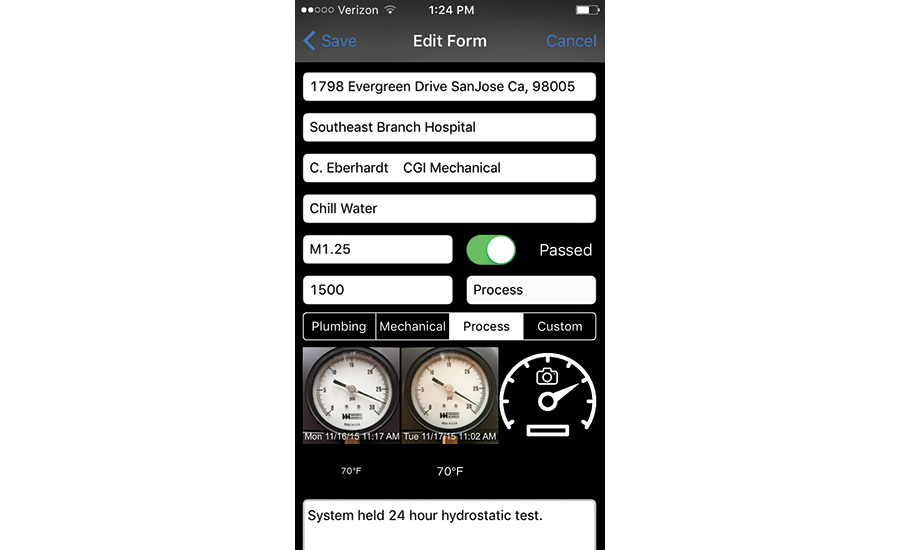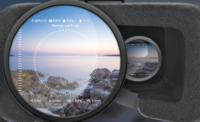Frustrated by seeing apps for everything but what he needed, Chris Eberhardt, a piping foreman, created an iOS and Android application to save him time as well as secure and standardize pressure-test reporting. The app comes out on April 23.
“If only I had this app seven years ago,” says Rudy Porras, service foreman for Environmental Systems Inc., Santa Clara, Calif., who beta-tested the Pressure Test Utility app.
On a job seven years ago, all the new copper pipes recently had been installed at a new construction site, and Porras performed the necessary pressure tests. Tests consist of noting pressure-gauge readings once and again eight to 24 hours later.
Porras did his work and went home, but, that night, all the copper pipes were stolen. In the ensuing insurance claim, the insurance company didn’t want to pay for Porras’ work because it claimed there wasn’t any proof he had done it—other than his hand-written documentation.
“If I would have had the app seven years ago, I’d have proof,” says Porras, referring to the Pressure Test Utility app, which brings data security measures to the process of pressure testing.
The app automatically time- and date-stamps photos of pressure-gauge readings to verify that sufficient time has passed between readings. When the data is exported from the app via secure in-app email, it also watermarks and electronically signs the photos and a report. Such security will give peace of mind to inspectors, says Porras. Now, on most of his jobsites, he uses the app’s secure reports in lieu of paper documentation, he says.
“Once emailed, the report can act like a legal document,” observes Eberhardt.
Noting an additional benefit of the app, Porras says it allows inspectors to use the camera to capture readings easily in hard-to-reach locations.
“They don’t want to climb up ladders, which is where most of our work is. So, they love the photos,” says Porras.
Further, the app uses the phone’s temperature gauge to provide a temperature reading on the report. “It came in handy,” says Porras. “Once, when I came back to the gauge, the pressure dropped 1.7 pounds, but the temperature was several degrees warmer, so the inspector realized the pipes were OK.”
Eberhardt says that, even before beta tests began, the app helped him on a project.
“Our excavator hit a duct bank—a massive repository of conduits underground,” he says. It happened on a Sunday, and workers were getting paid double time but couldn’t move forward. The general contractor was away, but Eberhardt took some time-and-date and watermark stamped pictures and got the general contractor to sign off on continuing work. “We were able to go ahead and keep working,” he says. “It saved us from a wasted day.”
The app is available in a “freemium” mode for trials, says Eberhardt. Users can download and test the app but can’t send the reports without upgrading to the premium mode, which costs $50 a year or $30 for six months.
“I look at it like another tool in my tool belt,” says Eberhardt. “I go through a couple of $300 impact drills a year. And this tool does a good, safe documentation job.”
Eberhardt is releasing two other apps at the same time: Mechanical Deficiency Utility and Electrical Panel Utility. Both operate on a template similar to Pressure Test Utility, and both use the same secure time-and-date, watermark and electrical signature measures to bring security to the applicable processes.




Post a comment to this article
Report Abusive Comment